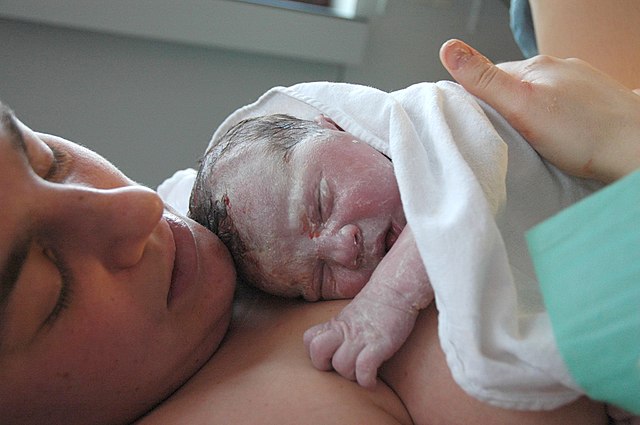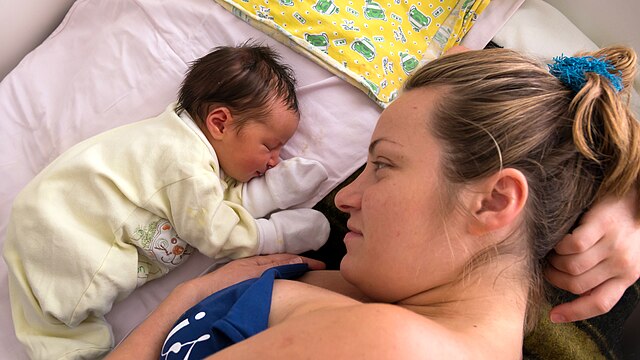Introduction
Postpartum depression (PPD) is a critical mental health issue that can significantly impact new mothers and their families. Two of the most common conditions affecting new mothers are the “baby blues” and postpartum depression (PPD). While they may share some similarities, they differ significantly in terms of duration, severity, and required treatment. Understanding these differences is crucial for ensuring timely and appropriate support and intervention. This comprehensive guide aims to educate about the early signs of PPD, the importance of early detection, and strategies for recognizing and addressing these symptoms promptly.
Differentiating Baby Blues from Postpartum Depression
The “baby blues” are a common condition that affects up to 80% of new mothers and includes mood swings, crying spells, anxiety, and difficulty sleeping. These symptoms usually start within the first few days after delivery and go away within two weeks. In contrast, PPD symptoms are more severe and long-lasting, often requiring medical intervention.

The Baby Blues Symptoms
Symptoms of the baby blues are generally mild and include:
- Mood swings
- Irritability
- Anxiety
- Tearfulness
- Difficulty sleeping (even when the baby is asleep)
- Feeling overwhelmed
- Reduced concentration
These symptoms tend to be transient and usually resolve without medical intervention.
Causes
The baby blues are believed to result from a combination of hormonal changes, fatigue, and the emotional adjustment to motherhood. The sudden drop in estrogen and progesterone levels after delivery, combined with physical exhaustion and sleep deprivation, can contribute to these symptoms.
Early Signs of Postpartum Depression
Emotional Symptoms
- Persistent Sadness: Feeling continuously sad or empty.
- Excessive Crying: Frequent crying for no apparent reason.
- Feelings of Hopelessness: A pervasive sense of hopelessness and despair.
- Guilt and Worthlessness: Feeling like a failure or thinking you’re not a good mother.
- Irritability and Anger: Increased irritability or anger, even over small matters.
Physical Symptoms
- Fatigue: Extreme tiredness that doesn’t improve with rest.
- Sleep Disturbances: Trouble sleeping even when the baby is sleeping, or sleeping too much.
- Appetite Changes: Significant changes in eating habits, either eating too little or too much.
- Physical Aches and Pains: Unexplained physical issues such as headaches or stomachaches.
Behavioral Symptoms
- Loss of Interest: Lack of interest in activities you used to enjoy.
- Withdrawal: Avoiding friends, family, and social activities.
- Difficulty Bonding: Trouble bonding with your baby or feeling indifferent towards your baby.
- Neglecting Self-Care: Not taking care of personal hygiene or other daily tasks.
- Anxiety and Panic Attacks: Experiencing severe anxiety or panic attacks.
Cognitive Symptoms
- Difficulty Concentrating: Trouble focusing, remembering things, or making decisions.
- Indecisiveness: Difficulty making even simple decisions.
- Intrusive Thoughts: Having disturbing thoughts about harming yourself or your baby, which require immediate medical attention.
Risk Factors for Postpartum Depression
Biological Factors
- Hormonal Changes: Rapid changes in hormones after childbirth.
- History of Depression: Personal or family history of depression or other mental health disorders.
- Thyroid Problems: Thyroid imbalances can contribute to depressive symptoms.
Psychological Factors
- Stress: High levels of stress related to the baby or other aspects of life.
- Personality Traits: Certain traits, like perfectionism, can increase the risk.
- Unplanned Pregnancy: Unplanned or unwanted pregnancies can add emotional stress.
Social and Environmental Factors
- Lack of Support: Insufficient support from partner, family, or friends.
- Marital Issues: Relationship problems can exacerbate emotional strain.
- Socioeconomic Challenges: Financial difficulties can increase the risk of PPD.
- Significant Life Changes: Major life changes or traumatic events can also contribute.
Importance of Early Detection
Early detection of postpartum depression is crucial for several reasons:
- Improved Outcomes: Early treatment can lead to better outcomes for both mother and baby.
- Enhanced Bonding: Helps improve the mother-infant bond.
- Mental Health: Prevents the progression of depression and reduces the risk of long-term mental health issues.
- Quality of Life: Enhances overall quality of life for the mother and her family.
Strategies for Early Identification
Self-Monitoring
New mothers should be encouraged to monitor their own emotional and physical well-being. Keeping a journal of feelings, thoughts, and behaviors can help identify patterns that indicate PPD.
Screening Tools
Healthcare providers should use standardized screening tools such as the Edinburgh Postnatal Depression Scale (EPDS) during postpartum visits to assess for PPD symptoms.
Education
Educating mothers, partners, and families about the signs and symptoms of PPD can facilitate early recognition and intervention.
Support Networks
Building a strong support network of family, friends, and healthcare providers can provide emotional support and help identify symptoms early.
Professional Help
Encouraging new mothers to seek professional help if they experience any symptoms of postpartum depression is vital. This includes talking to a doctor, therapist, or counselor.
Seeking Help
If you or someone you know is experiencing signs of postpartum depression, it is essential to seek help immediately. Here are some steps to take:
- Contact a Healthcare Provider: Schedule an appointment with a doctor or mental health professional.
- Reach Out to a Therapist or Counselor: Professional therapy can provide coping strategies and emotional support.
- Join a Support Group: Connecting with other mothers facing similar challenges can provide a sense of community.
- Inform Family and Friends: Letting loved ones know about the struggles can lead to better support.
Referecnes
- American College of Obstetricians and Gynecologists. (2018). Postpartum Depression. Retrieved from ACOG.
- Beck, C. T., & Gable, R. K. (2001). Comparative analysis of the performance of the Postpartum Depression Screening Scale with two other depression instruments. Nursing Research, 50(4), 242-250.
- Cox, J. L., Holden, J. M., & Sagovsky, R. (1987). Detection of postnatal depression: Development of the 10-item Edinburgh Postnatal Depression Scale. British Journal of Psychiatry, 150(6), 782-786.
- Earls, M. F. (2010). Clinical report—Incorporating recognition and management of perinatal and postpartum depression into pediatric practice. Pediatrics, 126(5), 1032-1039.
- Gavin, N. I., Gaynes, B. N., Lohr, K. N., Meltzer-Brody, S., Gartlehner, G., & Swinson, T. (2005). Perinatal depression: A systematic review of prevalence and incidence. Obstetrics & Gynecology, 106(5), 1071-1083.
- Howard, L. M., Piot, P., & Stein, A. (2014). No health without perinatal mental health. The Lancet, 384(9956), 1723-1724.
- Jones, I., & Smith, S. (2009). Puerperal psychosis: Identifying and caring for women at risk. Advances in Psychiatric Treatment, 15(6), 411-418.
- Kanes, S., Colquhoun, H., & Gartlehner, G. (2018). Antidepressant treatment of depression during pregnancy and the postpartum period. Journal of the American Medical Association (JAMA), 319(22), 2288-2295.
- Murray, L., & Cooper, P. J. (1997). Postpartum depression and child development. Psychological Medicine, 27(2), 253-260.
- National Institute for Health and Care Excellence. (2014). Antenatal and postnatal mental health: Clinical management and service guidance. Retrieved from NICE.
- O’Hara, M. W., & McCabe, J. E. (2013). Postpartum depression: Current status and future directions. Annual Review of Clinical Psychology, 9, 379-407.
- Patel, M., Bailey, R. K., Jabeen, S., Ali, S., Barker, N. C., & Osiezagha, K. (2012). Postpartum depression: A review. Journal of Health Care for the Poor and Underserved, 23(2), 534-542.
- Pearlstein, T., Howard, M., Salisbury, A., & Zlotnick, C. (2009). Postpartum depression. American Journal of Obstetrics and Gynecology, 200(4), 357-364.
- Ross, L. E., McLean, L. M. (2006). Anxiety disorders during pregnancy and the postpartum period: A systematic review. Journal of Clinical Psychiatry, 67(8), 1285-1298.
- Sit, D., Luther, J., Buysse, D., Wisner, K. L. (2016). Suicidal ideation in depressed postpartum women: Associations with childhood trauma, sleep disturbance and anxiety. Journal of Psychiatric Research, 82, 103-108.
- Stewart, D. E., & Vigod, S. N. (2016). Postpartum depression: Pathophysiology, treatment, and emerging therapeutics. Annual Review of Medicine, 67, 231-243.
- Wisner, K. L., Chambers, C., & Sit, D. K. (2006). Postpartum depression: A major public health problem. JAMA, 296(21), 2616-2618.
- Yawn, B. P., Olson, A. L., Bertram, S., Pace, W., Wollan, P., & Dietrich, A. J. (2012). Postpartum depression: Screening, diagnosis, and management programs. Journal of the American Board of Family Medicine, 25(3), 333-338.
- Yonkers, K. A., Vigod, S., & Ross, L. E. (2011). Diagnosis, pathophysiology, and management of mood disorders in pregnant and postpartum women. Obstetrics & Gynecology, 117(4), 961-977.
- Zlotnick, C., Tzilos, G., Miller, I., Seifer, R., Stout, R., & Ciampa, A. (2016). Randomized controlled trial to prevent postpartum depression in mothers on public assistance. Journal of Affective Disorders, 189, 263-268.


